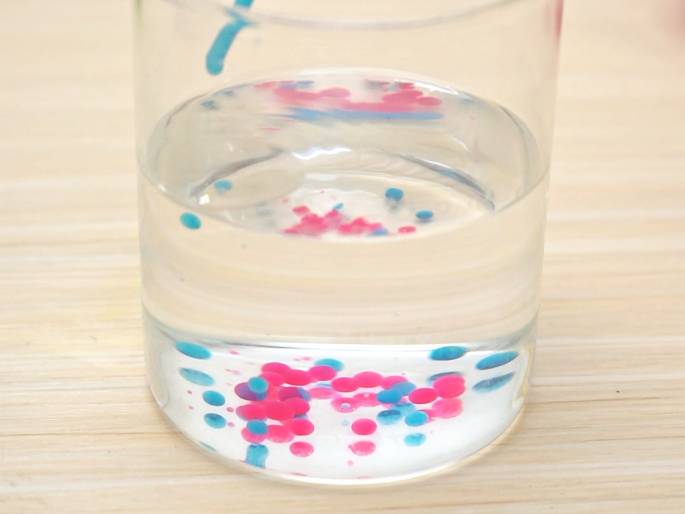Emotion Sensory Bottle
Stem Activities

Ages: 3-5

Less than 30 minutes

Grownup needed
Remember the emotion bottles from Inside Out? Create this calming bottle to help settle emotions. Watch as colourful balls float upwards in the water, like vibrant Turkish hot air balloons slowly rising into the sky. Experience the colours, relax your mind, and share this peaceful moment with your child!
Materials Needed
- Cooking oil
- Chalk
- 300ml rubbing alcohol
- Four containers
- Lolly stick
- Water
- Dropper
- Glass jar
- Knife
Step-by-step tutorial
Pour cooking oil into 4 separate bowls.

Scrape different coloured chalk powder into the four bowls using the knife. Mix thoroughly with the lolly stick.

Pour the rubbing alcohol into the glass jar.
Using the dropper, collect different coloured oil mixtures and drop them into the jar with alcohol.

Carefully pour water down the side of the glass jar containing the alcohol.

Are your hot air balloons floating yet?

The Science Behind It:
The cooking oil containing chalk powder has a slightly higher density than alcohol, so when we drop it into the alcohol, the oil sinks to the bottom. Water has a higher density than both oil and alcohol, so it sinks to the very bottom. This causes the coloured oil drops to float between the water and alcohol layers, just like hot air balloons floating in the sky.

 STEM Activities
STEM Activities Artistic Adventures
Artistic Adventures Playful Learning
Playful Learning The Recipe Repository
The Recipe Repository  Nature Explorations
Nature Explorations












